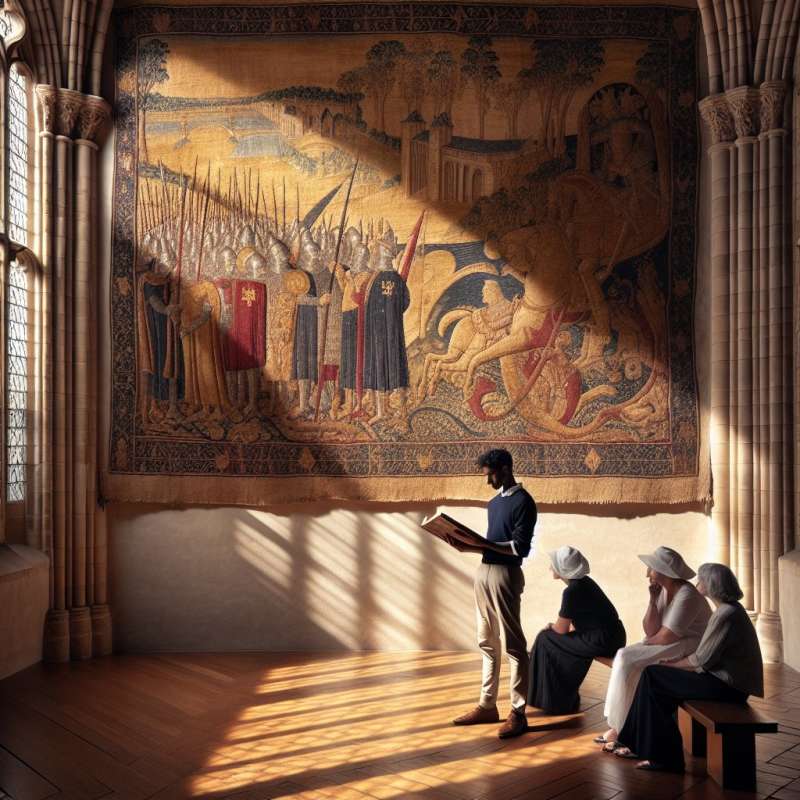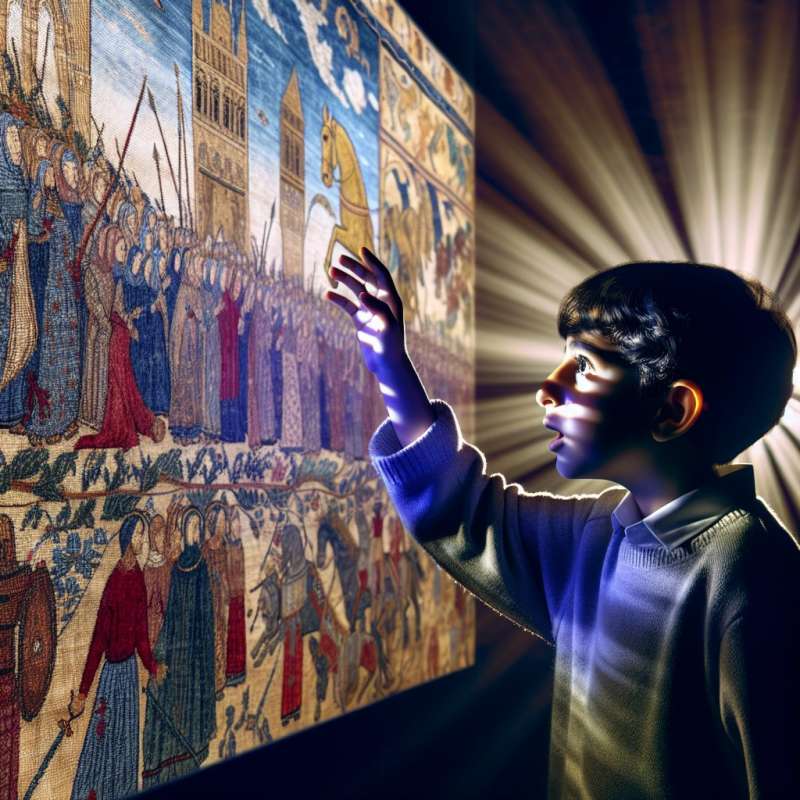
The Bayeux Tapestry Introduction
The Bayeux Tapestry is an embroidered cloth, not a tapestry, measuring 70 meters long. It depicts the events leading up to the Norman Conquest of England and the Battle of Hastings in 1066.
Unique Historical Perspective
Created in the 11th century, the Bayeux Tapestry offers a rare, detailed contemporary visual record of medieval arms, apparel, and other historical details often lost to time.
Mystery of Creation
The exact origins of the Bayeux Tapestry are unknown. While traditionally attributed to Queen Matilda, William the Conqueror's wife, historians now suggest it may have been commissioned by Bishop Odo, William's half-brother.
A Propaganda Piece?
Some scholars argue the Bayeux Tapestry was propaganda, meant to justify William's conquest to a wider audience by portraying Harold Godwinson as an oath-breaker.
Astronomical Event Recorded
The tapestry provides a crucial historical record by depicting Halley's Comet. The appearance of the comet in 1066 was seen as an omen and is one of the earliest known pictures of this event.
Survival Through Centuries
Remarkably, the tapestry has survived nearly a millennium, enduring the French Revolution and World War II. It almost became a wagon cover during the French Revolution.
Interactive Digital Exhibition
Today, you can explore the Bayeux Tapestry digitally, thanks to a complete photographic reproduction that allows viewers to examine its intricate details online, transcending geographical boundaries.
What year does the tapestry depict?
Battle of 1066
French Revolution era
World War II period
Company